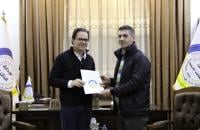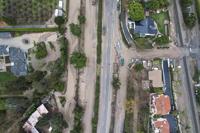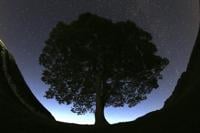QUITO, Ecuador (AP) — As Christmas approaches and people decorate their homes with lights, Ecuadoreans are getting some relief from the severe power cuts that have hounded the country this year with President Daniel Noboa saying there will be no power rationing for residential areas - for the time being.
But some of the country’s largest mines, cement factories and steel mills will not be so lucky, facing continued power rationing in the last two weeks of December, according to Ecuador’s Ministry of Energy. And there are no assurances the rationing will stop next year.
This discrepancy between residential and industrial areas has raised concerns in Ecuador’s business community over the future of the economy. Companies in the South American nation are losing from daily power cuts, according to the chamber of commerce in Guayaquil, Ecuador’s largest city.
Ecuador’s latest power rationing scheme, which began on Dec. 20, has also prompted some analysts to question whether President Noboa is using the nation’s scarce supply of electricity for political ends.
Ecuador will hold presidential elections in February and Noboa, a conservative who has promised to fix the nation’s electricity crisis and tackle its growing problem with drug gangs, is planning to run for reelection.
The 37-year-old was voted into office i at the end of last year after his predecessor was forced to dissolve congress amid a corruption probe, and end his term prematurely.
“Noboa wants to stop people from being frustrated, or angry with the government,” said Hernan Reyes a political scientist at the Universidad Andina in the capital Quito.
For Esteban Ron, the dean of social sciences at Quito’s SEK University, Noboa’s decision to suspend power cuts in residential areas is part of an effort by the president to “redeem” himself with Ecuadorean voters and “show that he is fighting for the people.”
Ecuador since the end of last year has been struggling with power cuts that the goverment attributes to mismanagement of power plants and a dry spell caused by the El Niño weather pattern.
The nation of 15 million people invested heavily in hydroelectric power over the past two decades as it looked to promote cheap and renewable energy sources. But it has few alternatives to the electricity generated at its dams, which produce between 70% to 90% of Ecuador’s monthly power supply
As rain in Ecuador dropped to its lowest levels in 60 years this summer, the government was forced to implement power cuts in many cities lasting up to .
But last week the Noboa administration said in a statement that weather conditions have been improving and that maintenance problems at some of Ecuador’s hydroelectric plants have been fixed. Ecuador’s government also said a deal had been made to import electricity from neighboring Colombia, eliminating the need for power cuts in residential areas.
Business leaders in Ecuador remain concerned over the continuing cuts at industrial sites and question whether it is wise to prioritize residential areas.
“You cannot sacrifice production and employment in order to make promises (to residential areas) that may not last,” said Patricio Alarcon, the former president of Quito’s chamber of commerce.
Marco Acuña, the president of Ecuador’s national guild of engineers, said power cuts could return to residential areas after the holidays because Ecuador still has not substantially diversified its sources of energy.
Acuña said power plants using fossil fuels in Ecuador are currently producing less than 40% of the electricity they are designed to generate due to problems with engines and machines. He said the recent agreement to import electricity from Colombia will only cover about 8% of Ecuador's daily needs.
In the meantime, the citizens of Ecuador are enjoying their respite from the daily power cuts.
“I hope people come to buy things with the same enthusiasm as before” said Pablo Parra, a street vendor who sells Christmas trees and lights in Quito.
















































